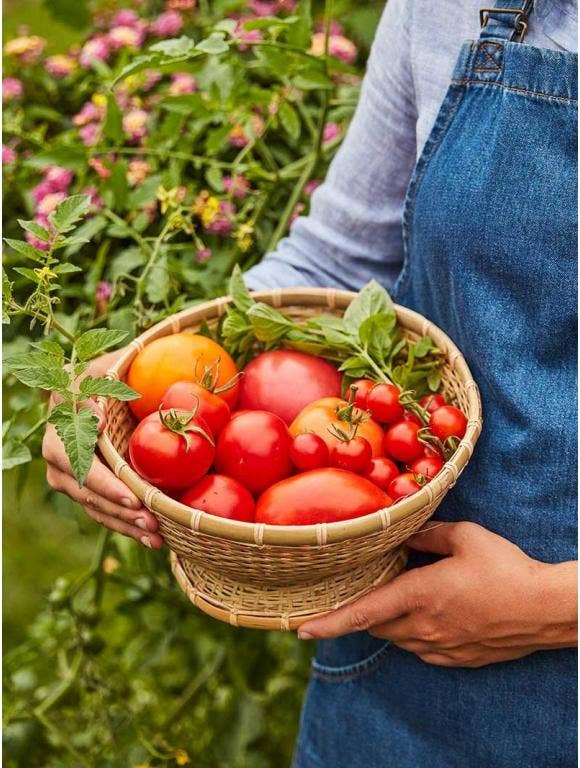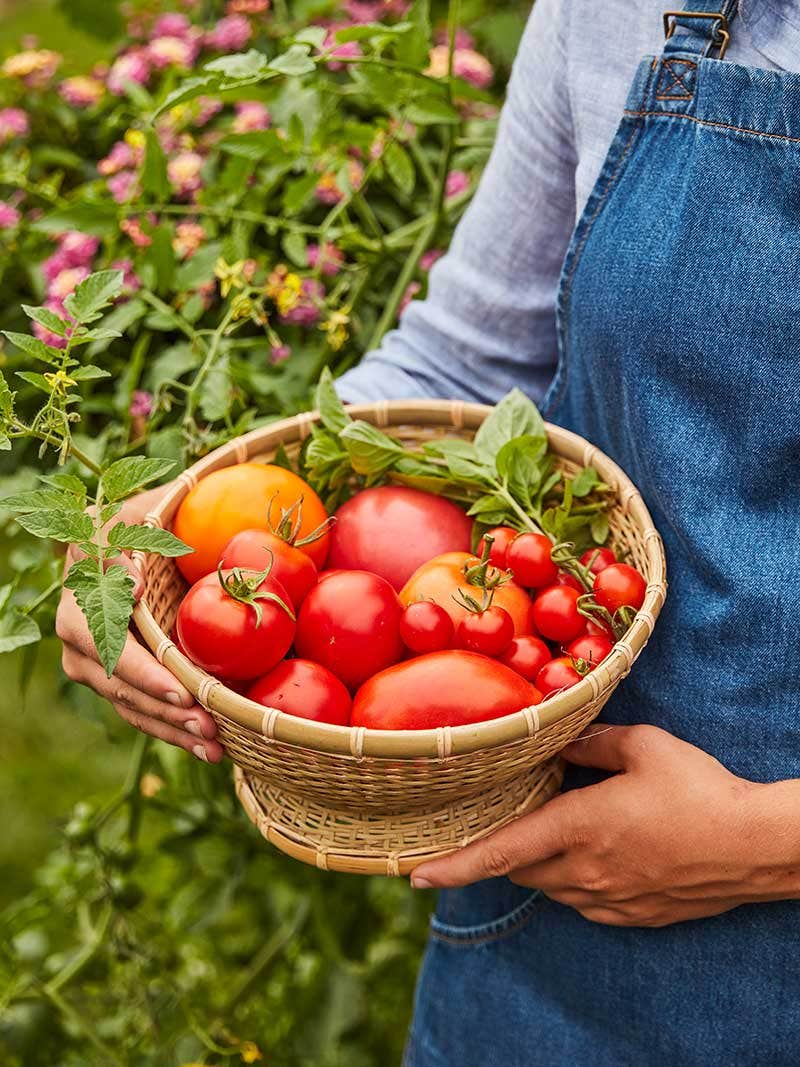


Tomatoes are an exciting summer crop that come in a wide array of shapes, colors and sizes. Just a handful of helpful tips for gardening tomatoes will get you started on the right path to a successful harvest.
Choosing the Right Tomato
When it comes to successful tomato gardening, determining the right cultivar is the first step to a bountiful harvest. Nowadays, you can choose from hundreds of different kinds of tomatoes to suit your needs, from the beefy 'SteakHouse Hybrid' that's perfect for slicing to the tiny 'Sweetheart of the Patio Hybrid' with bite-sized fruits. First, determine how much room you have and how much of that room you want to be filled with tomatoes. Bigger tomatoes almost always mean bigger vines, and most tomato varieties need 48 inches between plants for proper growth and ease of picking. So, choosing a cultivar that fits your space is essential.
When and Where to Plant Tomatoes
The wild ancestors of tomatoes came from climates near the equator, and like their ancestors, today's tomatoes love the heat and sun! The best time to plant tomatoes from seed is indoors while the weather is still cool outside. Then, move your seedlings outdoors for hardening off after the danger of spring frosts has passed. Using a cold frame or surrounding your seedlings with plant tepees will help extend your growing season even further.
Choosing a location for your plants is also important. For best results, choose a spot with full sun and protection from strong winds as some indeterminate (continuously growing) vines can get huge. Tomatoes prefer enriched soil with plenty of moisture retention, but too much fertilizer and moisture later in the season can lead to overly large, leafy plants with few fruits. Give tomatoes plenty of room away from lawns and other high-maintenance crops to allow for better control of their feeding and watering. To avoid a buildup of soil-borne pests such as nematodes, never plant tomatoes in the same location year after year. During off years, plant French marigolds like 'Nema-Gone' to prevent soil infestation.
Pest Prevention
Humans aren't the only ones that love biting into a vine-ripened tomato! Squirrels, birds, raccoons and even dogs will relish the fruits, so preventing them from reaching your plants is important. Long-lasting bird netting will help keep larger critters from harvesting your fruits before you can get them.
Common smaller pests such as early season cutworms can hit hard without protection. Wrap and staple a piece of cardboard or wax paper around the base of the seedlings about an inch above and below the soil to prevent damage. Hornworms are another common pest that can spring up with little notice. Be sure to check plants regularly while working in the garden.
Care and Maintenance
Tomatoes are hardy, active growers once they get going mid-season and can become impressively productive with little effort. However, feeding and watering can have a big impact on their growth.
Fertilize When Needed
When planting tomatoes, applying an organic probiotic fertilizer can go a long way at the onset of the planting season. After fruits begin to set, begin applying a light organic fertilizer to supplement nutrients without overfeeding.
Protect With Mulch
Take care to not overwater your tomatoes, but keep the soil evenly moist with a layer of thick mulch or plastic that holds in moisture and helps keep the ground warm. Red mulch has the added benefit of making it especially easy to see black hornworm droppings under afflicted plants and lessens the risk of splash back from rain and hose water, which can spread fungal infections.


Cage if Necessary
There are two main types of tomatoes: determinate or "bush tomatoes" and indeterminate or "vining tomatoes." However, these terms can be somewhat confusing as most tomatoes vine to a certain degree and nearly all benefit from support to hold their vines and fruit aloft. Install cages while plants are still young, and only remove them after the season has finished. Square cages work best to distribute the weight of the plants without toppling over.
Few summer crops are as rewarding to grow as tomatoes. And with the huge variety of cultivars available and these tips for gardening tomatoes, just about anyone can grow them at home.
For more information on how to successfully grow tomatoes, check out 10 Tips for Growing Perfect Tomatoes and Top 10 Tomato Solutions.



